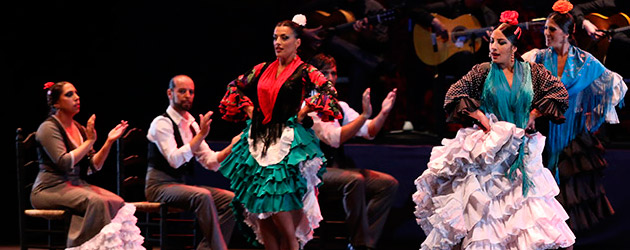Text: Antonio Conde
Photos & video: Rafael Manjavacas
Lorca & Granada. Jardines del Generalife. DUENDE, Lorca, Falla & Morente. Debut July 23rd, 2013. Granada.
This was possibly one of the best Lorca-oriented shows of recent years, at least of those I’ve seen, although some things must be said…
“Duende” is the summary of three parallel universes that come together in flamenco and in time. A chronology of a hundred years in which the “duende” has been present. If in the flamenco singing contest of 1922 giants such as Chacón and Manuel Torre, or the genius of Falla and Lorca were present, this time it’s the “duende” of Morente on display at the Generalife.
For years the handling of Lorca and flamenco has been criticized again and again. Overuse of either can lead to tedium. But if done with knowledge, with respect, with tender loving care and admiration, the result is worthwhile.
When the choreography of a show is of the level of artists such as La Moneta and Manuel Liñán (recently awarded the Premio Max), everything is possible.
The best way to examine this show is by separating the group choreographies from the solo numbers. Falla, Lorca and Morente are all there, and the best thing about a show is that the audience be able to read the message the dancing intends to transmit.
The three parallel universes I mentioned are condensed at first in a Lorca universe represented by the corps de ballet who transported us to the first third of the twentieth century, to the cafés cantantes with singer Jaime El Parrón who interpreted a memorable soleá apolá with his rough-hewn voice conveniently worn by time, sounding like old-time flamenco. The sounds of Albaycín, and bits and pieces of local fandangos brought the female dancers to the forefront and the folkloric aspect was on display.
Morente was up next. Tangos with Lorca’s verses. Let me tell you, Morente is the singer who best knew how to set Lorca’s poetry to cante. Tangos, bulerías and the company retires for Manuel Liñán to dance on his own.
The first half of the evening was non-stop dancing with choral numbers that showed the origins of local forms beneath the attentive gaze of a moon that peeked through the cypress trees. I say this so the reader may understand there was hardly any staging to speak of except the inspiration of Manuel Ribera. The lighting throughout the show made for a back-room feeling. The mood was dramatic when called for to accompany the group, although in actual fact this was the weakest aspect of the work.
The off-stage voice of Miguel Ríos delivered the text of Falla’s “La Guitarra”.
This segment gave center-stage to Falla and his “Amor Brujo”. With vivid red lights, shawls painted a classic picture of flamenco. A fine choreography by La Moneta for this small passage.
Javier Latorre is noteworthy in taranto (with the powerful voice of Miguel Lavi), a dancer whose interest in performing has been revived (his style and verticality are admirable, and his personality is unmatched), as is Liñán in siguiriyas. So young and yet with so much to say via dance. We noticed some segments from the siguiriya of his “Trisquel Flamenco”, although the new touches decorated and filled a stage that became small for him, despite its immense dimensions. Continuing in the solo line, there was La Moneta. We’ve commented on other occasions that her dancing possesses a flamenco language hard to match. To see her dance soleá with all the tragedy of siguiriya…who can surpass that nowadays?
Group choreographies included the “Salve Gitana”, tangos del camino and tanguillos (which could have been left out), and the flower vendor’s song that brought us right to the final number with Liñán and Moneta.
Outstanding was the original músic of Luis Mariano throughout the work, accompanied by Rafael Habichuela and Young Álvaro Pérez “El Martinete” whom we must keep our eyes on as he is headed for the heights of Granada guitar-playing.
Honorable mention for the magnificent corps de ballet that included Lucía Guarnido, Anabel Moreno, Eva Esquivel, Ana Latorre, Águeda G. Saavedra, Irene la Serranilla, Edu Leal, Adrián Santana, Raimundo Benítez, Fernando Jiménez, Hugo López and Antonio López.
Of course this was the debut, and a whole summer of shows lies ahead. The work is being broken in, and we forgive singer Juan Ángel Tirado for his hoarseness, and the lack of coordination between the singers in general. It must be very hard to sing in the style of Morente!
After the final curtain, there was general agreement among people filing out: too many group choreographies in a row, and then the solo dances separately. People wondered if it might not have been better to alternate choral dances and solos.
Anyone interested in resolving that doubt will have to go and see for themselves.
Duende – Generalife
